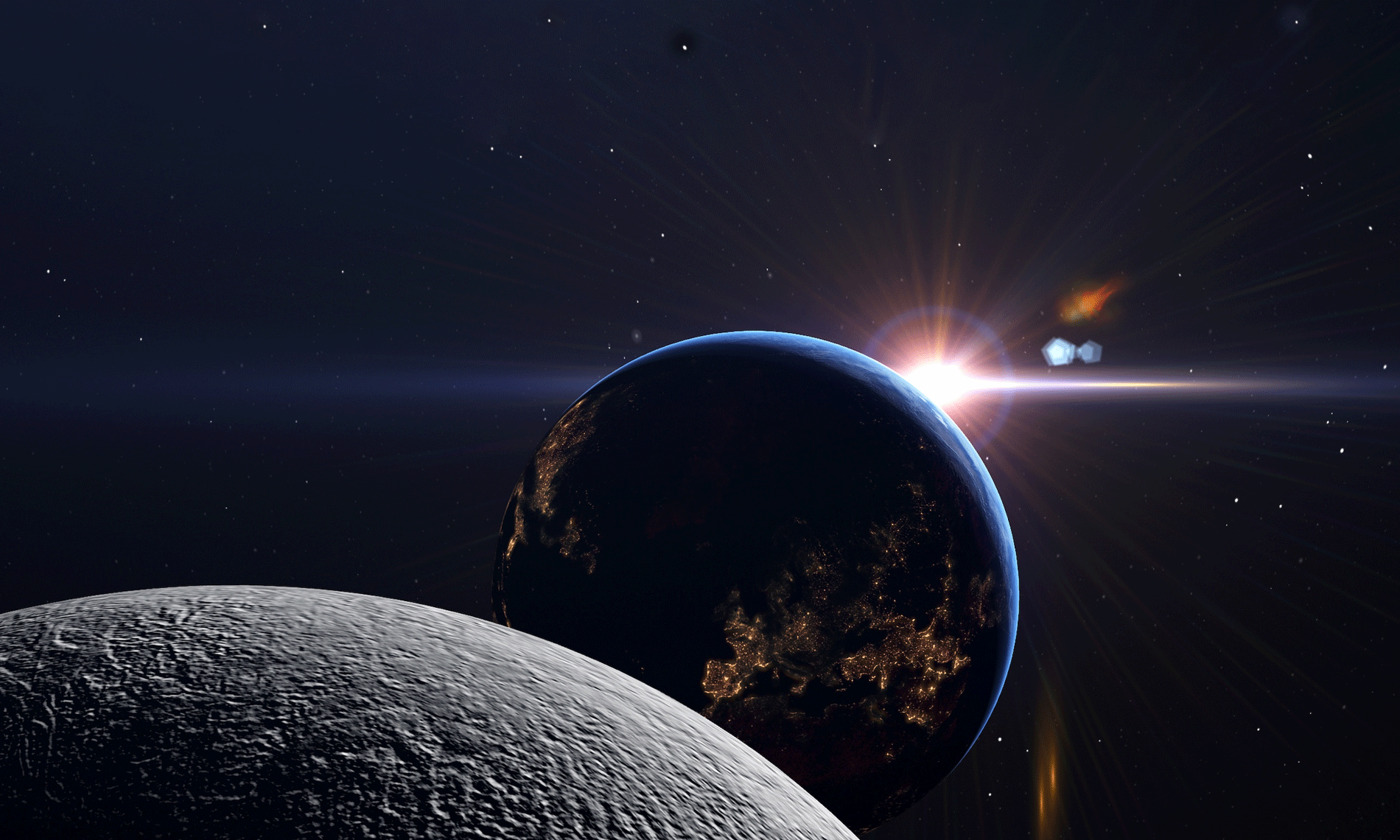
At the beginning of the last century, the engineer Hörbiger made a bold hypothesis: our planet would have known several moons that crashed one after the other on earth. As revolutionary as it is, this vision deserves that Eden Saga linger on it.
Hörbiger’s Hypothesis
Yes, I say Eden Saga, because as usual it doesn’t interest historians, geographers, or any scientist who cares about its advancement. And it’s disappointing.
Engineer by training, Hans Hörbiger is curious about everything. Inventor, essayist, theorist, this solid Austrian makes assumptions too original for his time. As he is not part of the serail, science then neglects him, and still ignores him. I have affection for this man, because my post-mortem destiny is likely to resemble his.
This strong spirit pointed out an astronomical evidence: satellites are captured by the planets, as the planets were captured by the sun. Thus a wandering celestial body was one day trapped by the terrestrial attraction and satellised around the earth. But its orbit did not describe a regular ellipse because the terrestrial attraction always exerted itself on it.
It continued to move closer to the earth, its orbit gradually narrowing, describing a spiral until the day when the satellite crashed on the globe. Here is what happened, according to Horbiger, at three old moons. The primary, secondary, and tertiary-era moons would thus have disappeared.
Which explains the gigantism of each of these eras, because by getting closer to the earth the growing attraction of each satellite would have reduced more and more the terrestrial gravity.
Hörbiger showed that for each geological era corresponds a different satellite, whose fall signals the end of the era in question.
What about the fourth moon?
And the current moon, the fourth, will it follow the same path? Let us be reassured, its average orbit is still only at 370,000 km, there is some margin. In fact, the moon would rather tend to move away… following the intervention of the Atlanteans? If it ever happened, it might not be the end of humanity, in any case it will be that of our geological era. Hörbiger showed that each geological era corresponded to a different satellite, whose fall signaled the end of the era in question.

Tsunamis
In the final phase, the moon is very close to the earth, its attraction is felt on the tides, which become tsunamis, and on the living organisms that increase their size. The closer the moon gets, the more gravity reduces, the bigger they grow.
And if they are not destroyed by the final explosion, gravity will exterminate them. This is exactly what we observe in geology: the Precambrian era saw giant plants, arboreal ferns, gigantic trees, which suddenly disappeared.
The Mesozoic era saw dinosaurs – and Cyclops, I might add – vanish just as brutally. Finally, the Tertiary era saw giant mammals – and the Titans, I should add – which also experienced rapid extinction. Came the quaternary moon, which still shines above our heads. And for a long time, let’s hope so. She hasn’t made us giants yet, but it will eventually happen. In two generations, we have already taken 13 cm on average, and it doesn’t just come from diets.
Of course, such an original hypothesis can only raise criticisms and objections.
You may say I’m a dreamer but I’m not the only one.
A protective belt
First, how is it that our planet resisted the impacts of huge bodies like these moons? Let’s be reassured, explains Hörbiger, the planets are not buffer cars. Various increasingly dense magnetic and atmospheric layers protect ours from frontal shocks. Before an asteroid hits the earth, it explodes on the Van Allen belt. Its debris satellises in turn, forming a ring like that of Saturn.
Yes, probably most of the time. But our so-called protection is far from being as solid as one could believe in its time. Despite the Van Allen belt.
The Van Allen radiation belt, or simply the Van Allen belt, is a toroidal zone of the Earth’s magnetosphere surrounding the magnetic equator and containing a high density of energetic particles. Their encounter with the molecules of the upper atmosphere is at the origin of the polar auroras. One may wonder if the Van Allen belt is not the last stage of evolution of a ring of solid particles.
Well, well… Would our planet have had a beautiful ring like Saturn? And if the moon explodes, would it make us another one? Come on, calm down, my Xavier. Saturn pas rond dans ta ptite tête…
A ring is nice and beautiful. But it’s like everything, it degrades. Then the earth’s gravity begins to attract it.
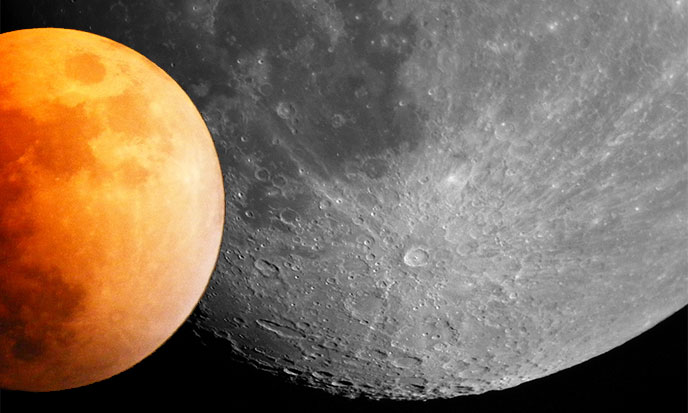
Our ancestors the Gauls
The ring then inexorably approaches and for a very long time more or less large debris falls on people. The Gauls or their ancestors knew that, hence their only fear, that the sky falls on their head. Of course, strong minds have not stopped paying attention to each other. The Gauls were donkeys, has been heard on numerous occasions in contemporary mouths. The more stubborn of the two are not those we think…
Yes, the sky has already fallen on terrestrial skulls. It happened to the dinosaurs, they took very expensive: a good crescent moon crashed on the Yucatan, goodbye dinos. End of high school. Some survived as best they could. But each time it’s the same, the survivors of the previous era are decimated by gravity.
For of course, when a moon disappears, its attraction also disappears, and our planet restores a gravity that nothing tempers… until a new wandering star is captured by the terrestrial attraction, and becomes the moon of the new era. And then it starts to end again. Until the earth itself ends up throwing itself into the sun, and the sun into a black hole, which is sure to happen as well. But as Hubert Reeves says, tomorrow won’t be the day before.French: C’est pas demain la veille.
Other moons
Fortunately for knowledge, it turns out that science always ends up correcting its short-sightedness. Imagine that we found other moons gravitating around the earth. Yes, it’s as I told you. Or rather, it’s as National Geographic says.
“The Moon may not be our only satellite. After more than 50 years of speculation and controversy, Hungarian astronomers and physicists have announced that they have finally confirmed the existence of two “moons” orbiting the Earth and entirely made up of dust.
In the journal Monthly Notices of the Royal Astronomical Society, the team describes how it managed to obtain snapshots of these mysterious clouds hidden about 400,000 km from Earth, or about the same distance that separates the Moon from the blue planet.
Researchers had previously deduced the presence of several natural companions of Earth, but it was not until 1961 that the Polish astronomer Kazimierz Kordylewski saw the dust clouds and gave them his name. And even then, their presence was questioned.
“Kordylewski’s clouds are two of the most difficult celestial objects to find. Although they are as close to the Earth as the Moon, they are largely neglected by astronomers,” said co-author Judit Slíz-Balogh, an astronomer at Loránd Eötvös University in Hungary. «It is intriguing to confirm the presence of two pseudo-dust satellites orbiting around the Earth, next to our lunar neighbor.» (source)
That will eventually rehabilitate Hörbiger and return to his brilliant hypothesis the beautiful title of theory.
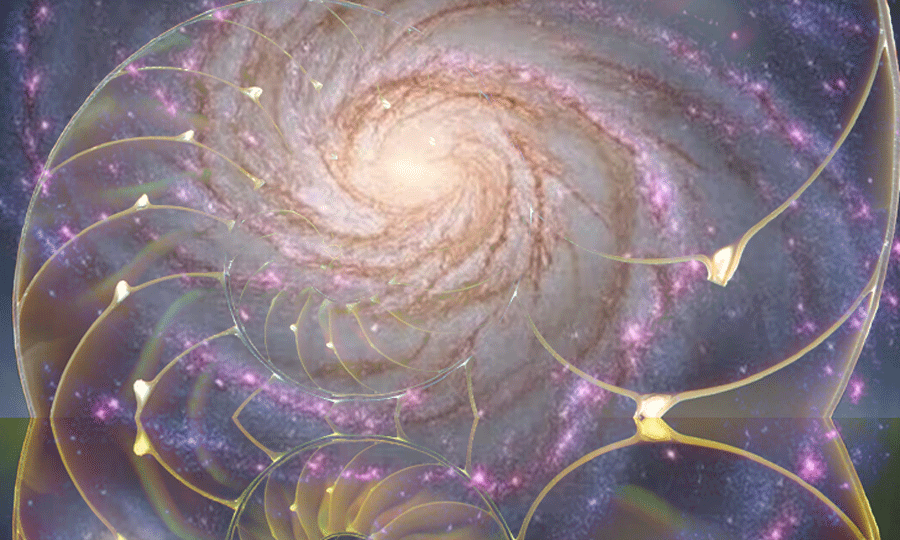
The universal spiral
This decreasing spiral , the ancients have always known it. The ancient Watchmen watched in the sky for signs of the lunar approach. Had they calculated the periodicity of the lunar falls according extremely long lunar cycles, like those of the Mayan calendar?
The inexorable spiral of agony was engraved on the megaliths. Tintagel labyrinth are a lesson in astrophysics to remind us of what happened and what is coming ahead. While the world is sinking into the throes of a programmed recession and the unpredictable jolts of moribund tyrannies, it is salutary to keep in mind what the pretty face of the moon hides.
One day, we will see it so closely that the debris of the US moon landing will spread endlessly before our eyes and in our skies, a cruel reminder of the pollution goddess who kills us. The full moon will be less romantic. Relax: before it falls on our heads, everything can very well blow up under our feet…
Sometimes humans do very well without gods to make everything explode…
And besides, the sky will not fall on our heads, on the contrary. According to astronomers, the lunar ellipse moves away from the earth by 8 cm per year.
It’s not much, but in the long term, the moon will reach the critical point where it will escape the terrestrial attraction to be captured by the solar attraction: exit the moon. And on that day, hello gravity!! Without the moon, stop laughing!!! Gravity will be a grave !!!
It will be necessary to endure it well while waiting for the hypothetical capture of a new wandering star, which will make a new moon… Or several at the same time, it’s prettier… The past, the real one, explains to us what awaits us. To better understand it, let’s not give total trust to the scientists of the seraglio. And let us beware of forgetting this strange process, the capture of the moons and their downward spiral.
Tradition teaches us that man was present from the Mesozoic era. The discoveries that archaeology denies also attest to this. If man has already known three geological eras, he has lived at least two distinct phases of gigantism, which could well be the origin of all these tales about Giants of the Golden age.
Sometimes you don’t make the proper analysis of an event for you get stuck to the only point of view that seems evident.
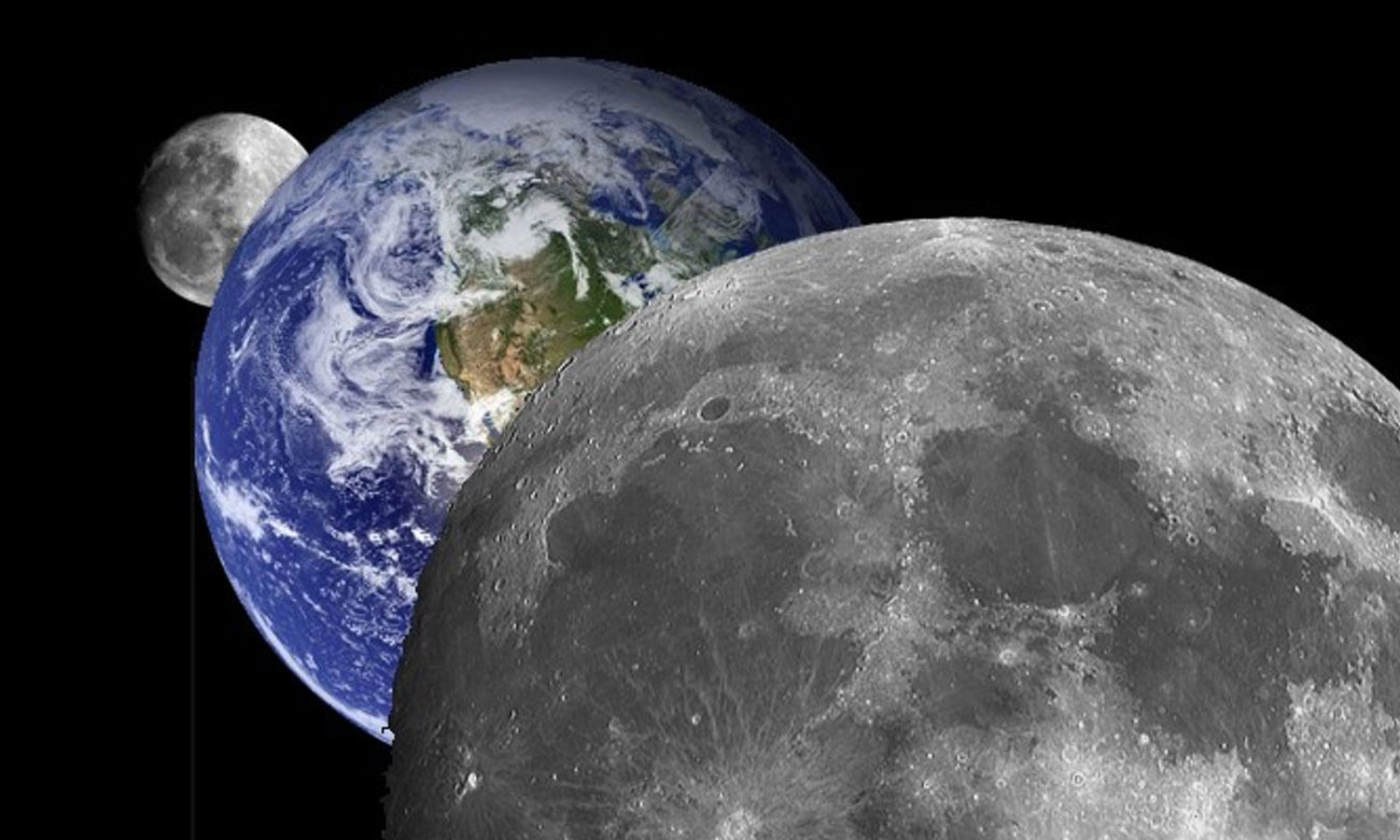
Ancient Technology
- Ancient Energy
- The Meaning Of Tao
- Perpetual Lamps
- Vimana, ancient UFO?
- Vimanas And Antigravity
- A Prehistoric UFO
- Secret History Of Ancient Aircrafts
- The Tower Of Babel
- The Spaceship Of Babel
- Baalbek Spaceport
- The Giants of Lachish
- Ancient Robots
- Triskell And Handspinner
- High Tech Prehistory
- The Antikythera Computer
- What Lack Of Evidence?
100.000 Years Underground
- Nuclear Winter Survival
- Noah Of Ice Age
- Ice Age
- Cyclic Destructions
- Ahura Mazda And The Flying Giants
- Underground Cappadocia
Gods of Thunder
- Brothers Of Lightning
- Cronos Aka Cronus
- Titans
- Thundering Zeus
- Thundering Tlaloc
- Thundering Perun
- Thundering Ramman
- Thundering Baal
- Thundering Yahweh
- The Sons Of Cyclops
- Thundering Cyclops
- The Masters Of Lightning
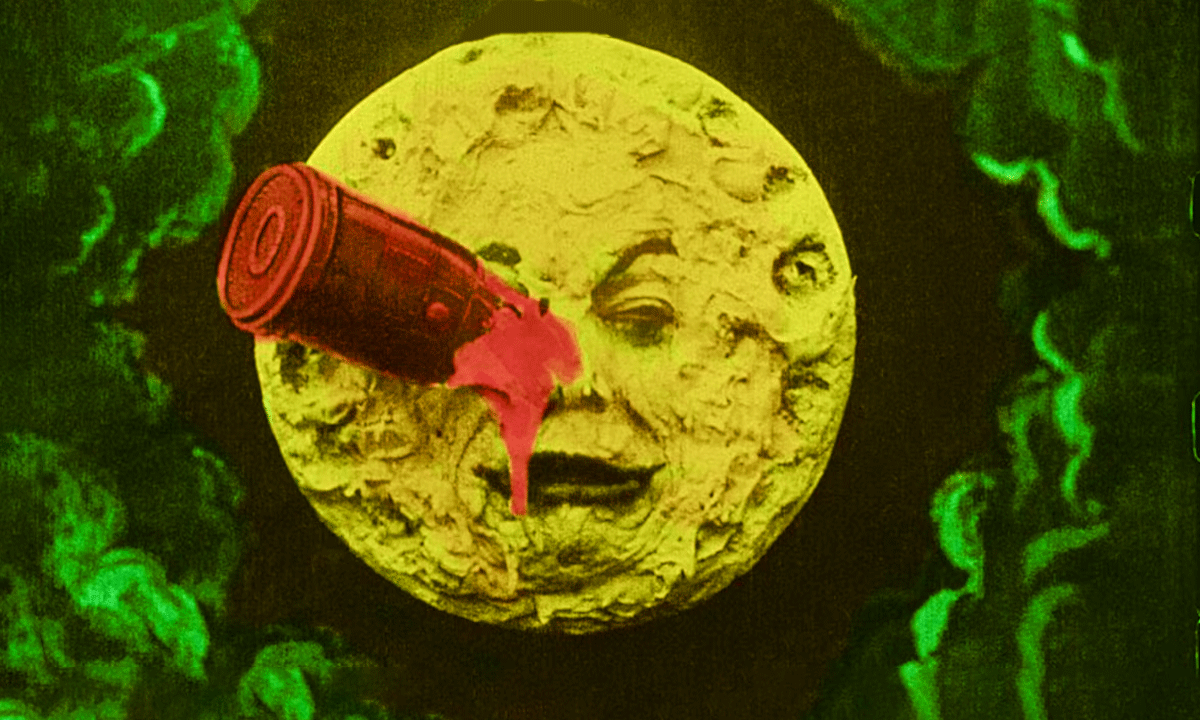
In 1902, a French pioneer of cinema, Georges Méliès, wrote, produced and directed a science fiction silent film, Le Voyage dans la Lune. Contemporary of the engineer Hörbiger, was Méliès influenced by his theory? Anyhow, they both promised us the moon …


